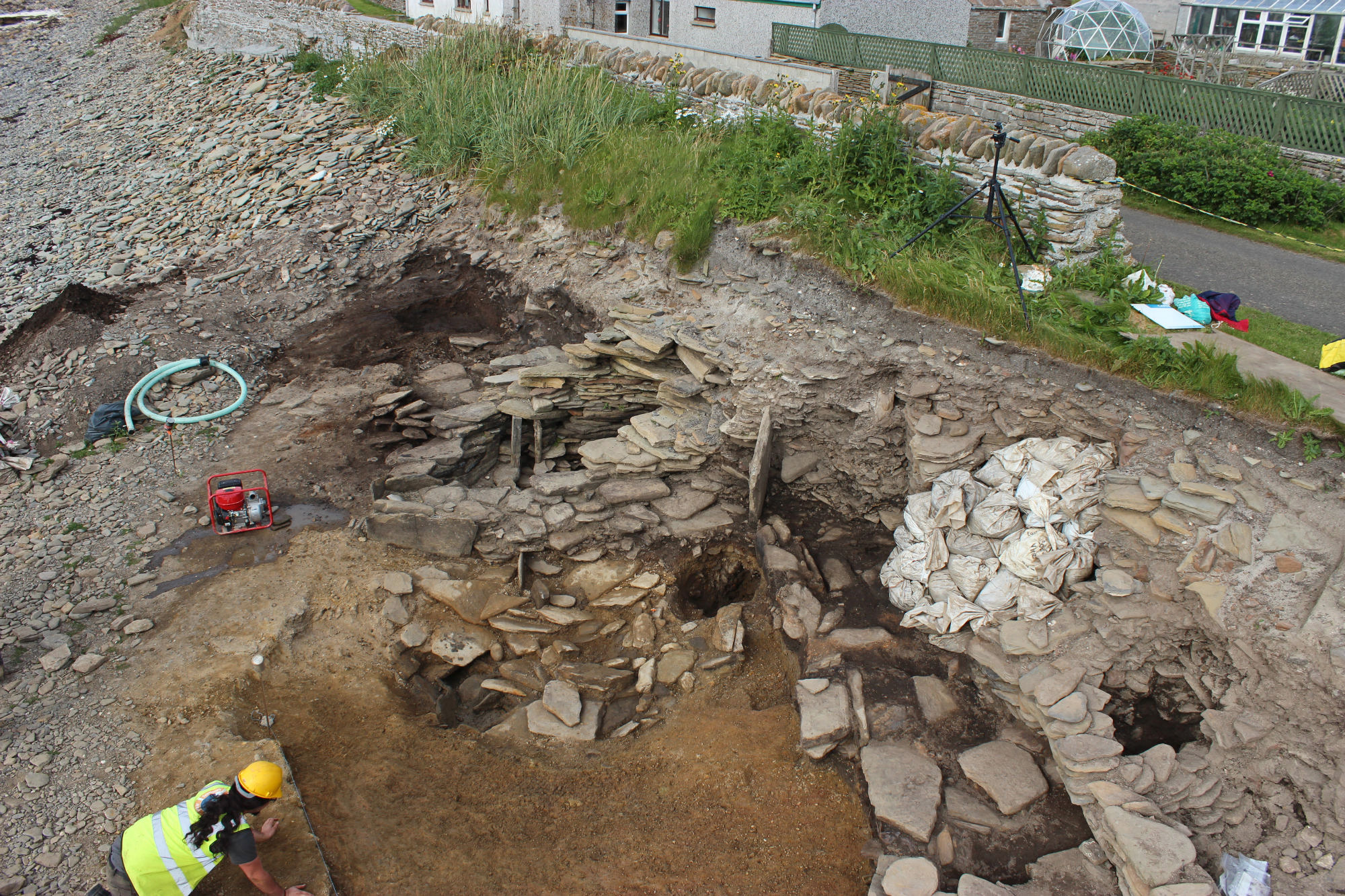The Meur burnt mound in situ on the shore of Sanday.
Photo courtesy of SCAPE/University of St Andrews
In Scotland and around the world, archaeologists rush to understand ancient sites that climate change is both revealing and washing away.
On a North Sea shore in Scotland, a group of archaeologists struggles to dig in a storm. The wind is so fierce it threatens to blow them over, and bursts of hail and near-horizontal rain send them periodically scurrying for shelter. They’re battling water on more than one front: waves surge up the beach, threatening to inundate the worksite. Sometime after an expensive camera sails off a tripod and breaks, they abandon their dig.
Undaunted, the crew of professional and volunteer archaeologists returns a few months later to finish work at the site, a coastal farm called Meur. The structures they’re excavating have survived for thousands of years. But a strong storm uncovered the site in the first place, and the next storm could drag it into the ocean for good. In Scotland, as on coastlines around the world, climate change is both helping to reveal new archaeological sites and threatening to destroy them. Researchers and citizen scientists are racing time to collect the stories of these vanishing sites.
Read the rest of this article...

No comments:
Post a Comment